
juvenile White-eyed Vireo
Another beautiful morning to be on the Rockfish Valley Trail. My neighbor Frits and his wife Pat joined me on a bird hike, and after about 15 minutes, we met and joined up with about 10 birders from the Augusta Bird Club who were about 15 minutes behind us. We got there at 8:30, and in three hours logged 32 species; the Augusta birders had 33 species, including 6 species that I did not see today, so the number of species seen on the trail this morning was 38. My list and the other species seen by the bird club are shown below.
On the downstream trail, I saw three species of Vireos: a juvenile White-eyed, a Red-eyed, and another Philadelphia - different bird than the one I saw on 9/9/10, as this one did not have a yellow throat. Although it could be a Warbling Vireo, it has dark lores, so I am calling it a Philadelphia as there are several reports of them this week here in Virginia. Other opinions would be appreciated. [9/12/10 update - other birders have presented strong arguments for it being a Warbling Vireo]

juvenile White-eyed Vireo
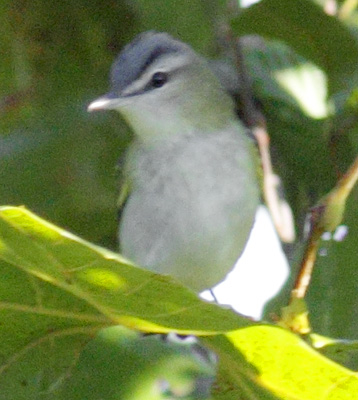
Red-eyed Vireo

Philadelphia Vireo [9/12/10 update - Warbling Vireo]

Philadelphia Vireo [9/12/10 update - Warbling Vireo]
As soon as we started on the Glenthorne Loop section of the trail, we were greeted by a Red-shouldered Hawk, and then another one a few minutes later. Later in the hike we saw a couple of Red-tailed Hawks, one of which was carrying its lunch in its talons. We also saw an American Kestrel, but I was not able to get a photo of it.
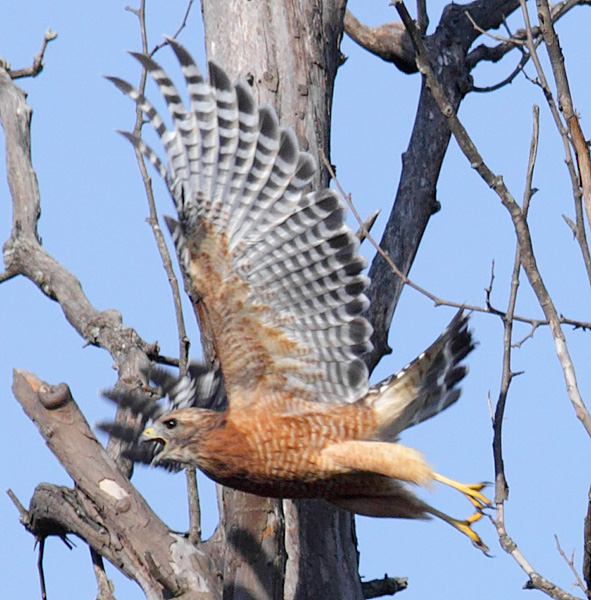
Red-shouldered Hawk

Red-shouldered Hawk
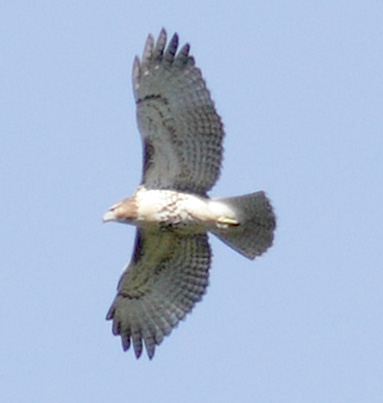
Red-tailed Hawk
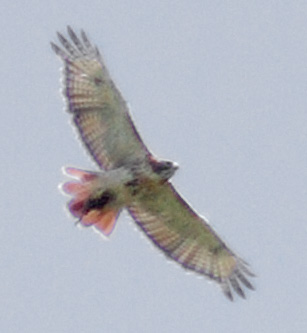
Red-tailed Hawk
We saw lots of woodpeckers, including Pileated, Red-bellied, and several Flickers.

Pileated Woodpecker
Of course, this time of year, the excitement comes from seeng migrating warblers. We saw a Magnolia Warbler on Glenthorne Loop, as well as a very interesting warbler. We got a good look at this warbler, and in the field, based on everyone's visual sighting and viewing photos on my camera viewfinder, we called it a first fall Connecticut Warbler - a real rarity for this area. We ruled out Nashville and Mourning Warblers based on plumage coloring. However, the Connecticut and Mourning Warblers have pink legs, and after viewing all of the photos on my computer screen, I see dark legs, and therefore think that it is a first fall Nashville Warbler. All opinions would be appreciated. [9/12/10 update - other birders have presented strong arguments for it being a Yellow Warbler]
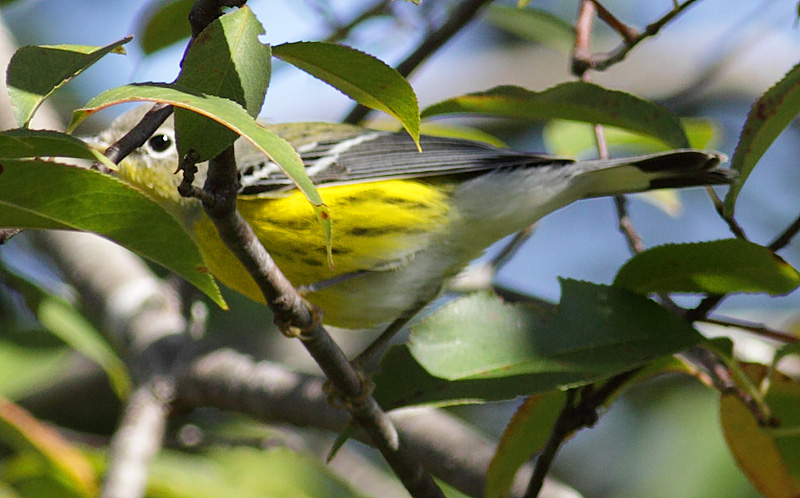
Magnolia Warbler

Nashville? Warbler [9/12/10 update - Yellow Warbler]
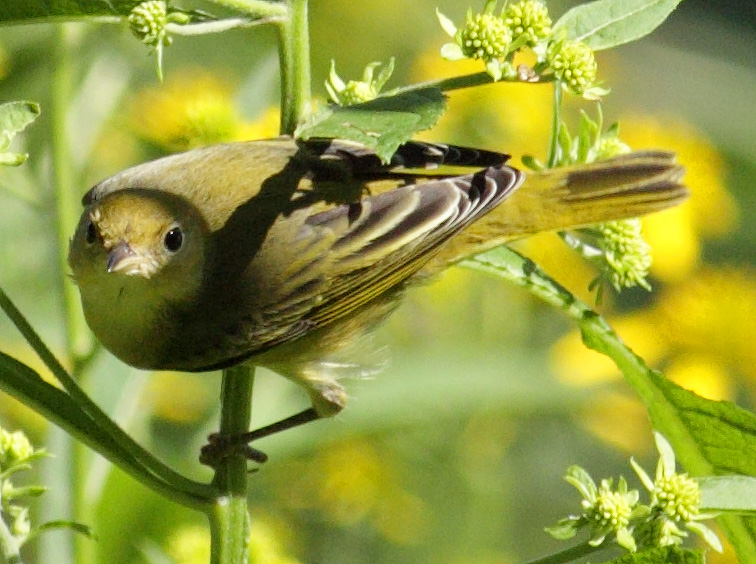
Nashville? Warbler [9/12/10 update - Yellow Warbler]
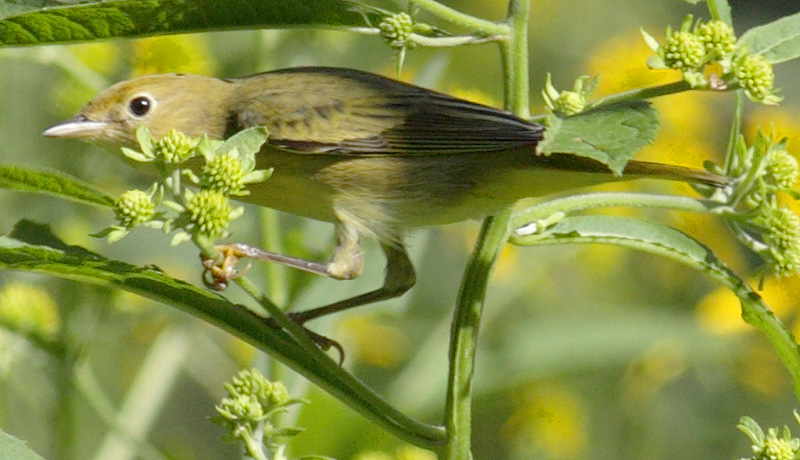
Nashville? Warbler [9/12/10 update - Yellow Warbler]
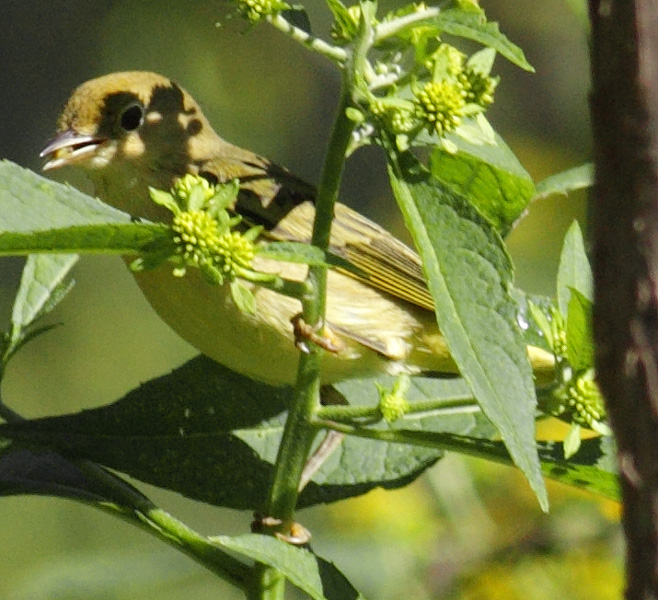
Nashville? Warbler [9/12/10 update - Yellow Warbler]
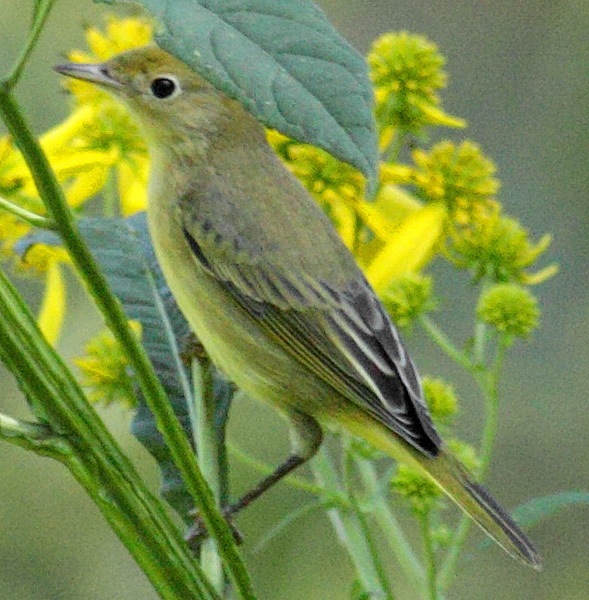
Nashville? Warbler [9/12/10 update - Yellow Warbler]

Nashville? Warbler [9/12/10 update - Yellow Warbler]
My list for the morning:
American Crow
Eastern Bluebird
Chipping Sparrow
Field Sparrow
Cedar Waxwing
Great Blue Heron
Indigo Bunting
American Goldfinch
Eastern Phoebe
Catbird
Carolina Wren
Ruby-throated Hummingbird
Turkey Vulture
Black Vulture
Pileated Woodpecker
Flicker
Red-bellied Woodpecker
Mourning Dove
Blue Jay
Rose-breasted Grosbeak
Blue-gray Gnatcatcher
Red-tail Hawk
Red-shouldered Hawk
American Kestrel
Carolina Chickadee
Rock Pigeon
Northern Cardinal
Philadelphia Vireo [9/12/10 update - Warbling Vireo]
Red-eyed Vireo
White-eyed Vireo
Magnolia Warbler
Nashville? Warbler [9/12/10 update - Yellow Warbler]
Other species seen today by the Augusta Bird Club members:
Eastern Wood-Pewee
Song Sparrow
Common Yellowthroat
Blackpoll Warbler
Downy Woodpecker
Kingfisher
[9/12/10] The mystery warbler seen on the Rockfish Valley Trail yesterday has provided
some interesting comments:
1. Stauffer M. (VA): You're right, the bird does have some eye ring. But, if you should happen to
find a Nashville Warbler (or perchance Connecticut) you're going to say
something like, "That's an eye ring.!" I sent the photos of the mystery bird
(Nashville Warber?) to a bird guide I trust thoroughly. He immediately replied
your bird was a yellow warbler. He says the darker centered wing feathers with
pale edges are a good field mark. If you check Sibley, I think you'll see this
is probably a brownish lst year Yellow Warbler.
2. Allen L. (VA): I checked out my guides & it fits the nashville to a tee. This little bird
gave us a run.
3. Chris M. (VA): I think Warbling Vireo not Philly. The brightest yellow should be in the chest in my experience and your bird appears to have white in the breast. Also I believe the lores are grey which is good for warbling. I am uncertain about the other Philly vireo. That one doesn't look right either. Has anyone else suggested different. [my response: The 9/9/10 vireo has a definite wedge-shaped, dark lore (Philly field mark) - see the web link in comment #4 below] As far as the unknown warbler, that is a tough one. I can say that it is 100% not a Nashville. I have banded tons of these guys and that bird is to big, bulky, and the bill is too big. Nashville has a petite little sharp bill. As far as what it is, I am not sure. The best I can come up with is a very very drab first year female Yellow Warbler. I am curious what others think.
My additional comments:
I assume that we can rule out Scarlet Tanager - I always forget to consider
tanagers as a possibility. All my references show all Yellow Warblers with
yellow-orange legs - the bird we saw yesterday has dark legs, so I am still not
sure what it is.
I posted my report page on the VA-bird listserver, and perhaps I will get some
more opinions.
[9/12/2010.2]
4. Mike B. (VA): I would say this is Warbling Vireo for several reasons. First, the complete lack of yellow on the throat and breast alone are heavily against philly. Second, the amount of white above and below the eye gives the bird the typical "blank expression" of Warbling vireo and the supercillium extends well beyond the eye and then narrows and fades onto the nape while that of philly generally stops just behind the eye (although not always). Third, Warbling can show darkish lores however in philadelphia they are generally very well defined and tend to be very wedge shaped with the broadest part at the eye and narrowing to a sharp point at the bill.
Just my humble opinion as I am no expert by far! You may want to take a look at the following link which has a very good treatise on these 2 vireos. http://creagrus.home.montereybay.com/ID-WAVIvPHVI.html
5.Rob H. (MD): Your ?Nashville Warbler is actually a Yellow Warbler. Nashville has a noticeably pointed bill, and lacks pale edgings on the tertials, scapulasrs, and wing coverts. Yellow has a blunter, thicker bill; pale (usually yellow but sometimes whitish) edges to tertials, scapulars, and wing coverts); pale/yellow edgings to the tail feathers; and can exhibit an eye-ring. Connecticut Warbler should always exhibit a contrast between the yellow underparts and the gray or brown hood. In addition, its legs are pale (as you have noted), its wing feathers lack pale edgings, and in autumn can have a buffy chin/throat area separated by the bottom of the hood from the yellow underparts.
6. Stauffer M. (VA): I don't like leg color very much as a field mark for warblers. You have an excellent field mark showing prominently on your bird, the Yellow Warbler. If you'll notice in Sibley, he has an arrow going to the tertials with whitish edges. This is the best field mark for a first year Yellow Warbler, and your photo shows it prominently. That's what you want to go by in this case.
7. Gerard H. (VA): Nice outing and pictures.
I believe that the second bird is an immature Yellow Warbler.
Note the yellowish edges on the wings and the yellowish color on the
outer tail feathers.
The vireo could be a Philadelphia Vireo but I think that it is
more likely that it is a Warbling Vireo. Your bird appears to lack any
yellow on the chin, throat and breast. Even the drabbest Philadelphia
Vireos should have some yellow on the center of the throat and upper
breast, and at this time of year (following breeding and into migration)
this bird typically has or is in the process of acquiring more yellow as
it undergoes its annual complete prebasic molt. Yellow on the flanks is
consistent with Warbling Vireo. As compared with the Warbling Vireo, the
Philadelphia Vireo also has brighter olive-green upperparts which
generally are more contrasting with its gray crown and forehead and
darker primary coverts. Your bird appears to lack much contrast between
the crown and back and appears plain overall to me. The Philadelphia
Vireo also has distinctly bolder facial markings as a result of a dark
eye line which extends through the lores to the bill, as compared to the
Warbling Vireo's faint, grayish eye line and pale lores. The facial
pattern on your bird looks pretty plain to me. Finally, the Philadelphia
Vireo also generally is smaller, more compactly built, shorter-tailed
and slightly smaller-billed than the Warbling Vireo (especially compared
with the larger eastern subspecies of the Warbling Vireo). These
structural differences are difficult for me to evaluate in your two
pictures but in my view they do not strongly suggest that the bird is a
Philadelphia Vireo given the other considerations noted above.
Let me know what others think.